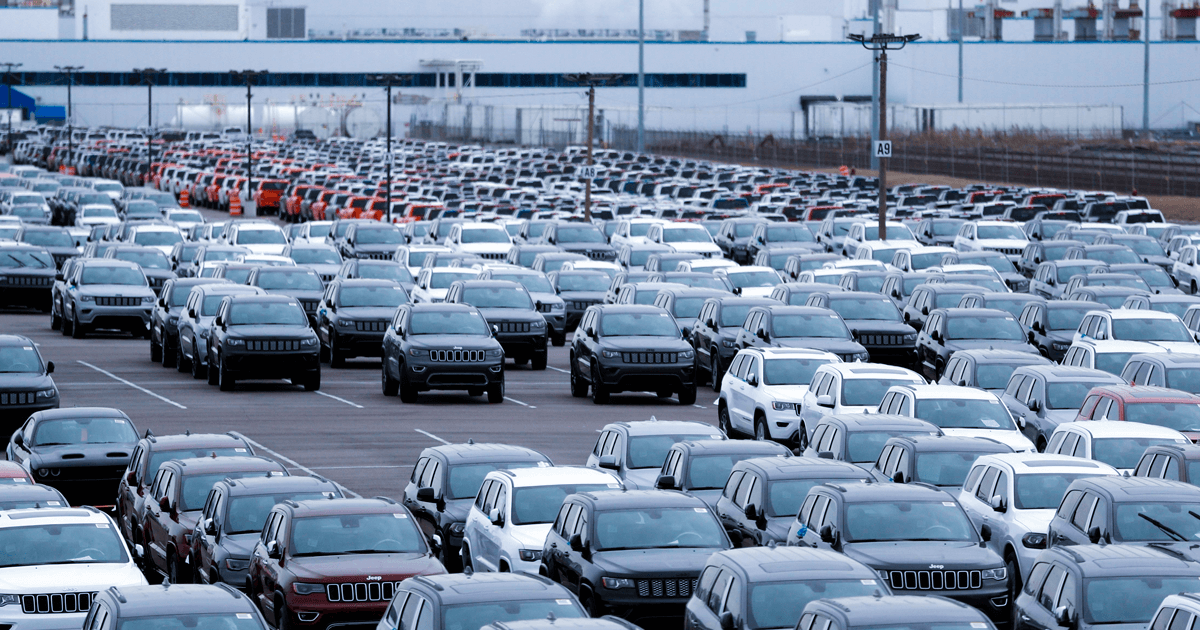
Interviews European Steel Conference 1322 13 December 2019
Global Steel Solutions president spoke about automotive industry perspectives for 2020
 |
Robert J. Mateer has worked in the automotive and steel industry for more than 30 years. Ford Motor and Chrysler are among his major employers. He has also helped to reengineer internal and external processes for North America, European and Asian companies, and integrated steel mills with tools of market segmentation and organization redesign. Now he runs his own company, Global Steel Solutions, which provides consulting services. We met Mr. Mateer at the European Steel Conference in Milan. He shared with us his opinion on short-term market perspectives and long-term transformational trends in the automotive industry. He has also named the probable winner of the steel/aluminum competition in the car production. |
Robert, what are your expectations for the next year in the automotive industry?
– It depends on the region we are talking about. In Europe, I believe, the automotive business will continue to trend down. European economy is continuing to weaken, so do the automotive sector.
In the US, the automotive sector has been strong for over 10 years now. Typically, the upward trends do not last that long. In 2018, 17.2 million vehicles were sold in the US. In 2019, Fitch Ratings anticipates an approximately 2% decline in U.S. sales, to 16.9 million vehicles. 2020 will be a good year for the US automotive sector. Not a record, but an average year.
South America and Asia, I believe, will continue to struggle in the automotive sectors.
In Europe automotive industry is the key driver of the steel demand. Is it true for the United States?
– Yes, automotive industry has been one of the main drivers for the US steel sector, especially since Section 232 introduction. It has made it difficult for steel imports to come into the US, especially for Tier 1, Tier 2, Tier 3 automotive stamping companies. It’s forced them to buy a greater percentage of their steel requirements directly from the domestic steel mills. The automotive industry is definitely a major driver for the steel demand in the US. Especially for galvanized, and high strength grades of steel with higher margins.
After the introduction of Section 232 the steel mills utilization rate in the US increased to over 81%. Since then, it has ranged from 77% to 81%.
How the Section 232 had affected the automotive sector in the United States? Are the carmakers suffering from high steel prices?
– Initially when the Section 232 was implemented in April 2018, the steel pricing shot up. People panicked. But today steel pricing is lower than it was before Section 232.
New steel mill capacity has come online in the US, and even more been announced. Also, steel mills have restarted some of their furnaces that were idled. Steel imports are down, and the domestic mills have for the most part been able to produce enough steel to meet the demand.
The automotive sector had to recalculate and put together other strategies to not be negatively impacted like some of the other industries. Some of the automotive companies had long-term contracts, so they had time to address Section 232. I believe, some people that weren’t planning ahead or didn’t have a strategy, might be affected and paid a premium compared to others.
But when you look at the amount of steel in every automotive, roughly a ton, if you do the math, you will see that it is less than 5% in a $50,000–80,000 vehicle. So, it’s a small portion of the cost of the automotive.
So the steel price changes are not that remarkable?
– Yes.
Of course, the steel price in the US is higher than in Europe and in Asia. It’s the highest price in the world. And it has been so even before the Section 232 introduction. The difference [in hot-rolled] is about $70 dollars a ton. Now, after Section 232 introduction, you need to add 25% duty or tariff on top of that – whether it’s steel from Turkey or Europe… Therefore, it’s definitely not feasible to bring in imported steel.
U.S. steel pricing is still a higher cost than the rest of the world, but it’s digestible for the automotive. It’s not going to jeopardize their production or their sales.
So are there some changes in the competition between automotive companies in the US after Section 232 introduction?
– I don’t really believe, that they feel disadvantaged. I think that they convinced the government in Washington to make some exceptions for the import of certain proprietary grades of steel, or grades that weren’t available in the US. Thus, they were able to bring in those products without paying tariffs of the 25%. They worked to maneuver around the steel supply issue, and the good automotive companies, I believe, were able to implement some effective strategies for that. They were paying premiums but not to the point where it jeopardized the production. They were able to still have a very good automotive sales year.
The very next question is about some disruptive trends in the automotive industry – the car sharing, light-weight cars, Uber etc. How these things can change the automotive industry? For the steelmaker it is important too, as in light-weight car production less steel needed, while the car sharing and Uber mean that less cars are needed.
– Yes, a lot of young people are not looking to buy automobiles. They are using Uber, Lyft, and using mass transit. They are leaving the suburbs and moving into the cities where they can commute using mass transit. All those are factors of the next generation, and I think that will continue to be the trend, which will take away automotive sales.
As far as light-weight vehicles are still made with steel – it is the material of choice – a number of steel mills are working with the automotive companies to develop the ultra-high strength martensitic grades of steel that are highly formable and lighter. These grades are going to be more expensive than the others steel grades, but when you’re able to take weight out of a vehicle, that’s a big driver for the car companies.
So, yes, they will be producing less steel, but more exotic grades of steel in the next generation of automobiles to come.
There is also a trend for cheaper oil prices. Do you predict the bigger demand for big cars in this light?
– Well, I see a lot of Grand Cherokees on the road here in Italy. And when I talked to some of my friends here in Milan, and I asked them what vehicle would they like own, whether it’s a Mercedes, or BMW, or an Italian Fiat, or whatever, they said : “If I could have any car, I would drive a jeep Grand Cherokee”. That really shocked me.
In the U.S. the big cars are probably like a drug. People who have families and travel, have always had an appetite for bigger vehicles. And I don’t see that trend changing.
In the U.S. the oil and natural gas supply are continuing to grow. The US is now self-sufficient with oil and natural gas supply, and now actually exporting product. So, I think Americans will be able to continue to drive big SUVs at least for the next 5 or 5+ years. I don’t see that changing.
And I’m not convinced that a strictly battery-powered vehicle is the way to go. I think carmakers going to need some sort of flex-fueled cars, where it’s battery plus gasoline or battery plus hydrogen. A duel-phase flex-fuel technology in the next generation of vehicles is probably the way to go.
So, not totally electric, but dual?
Automotive companies have different views. Some of them are developing strictly electric vehicles, others – flex-fueled (battery and gasoline, or batteries and something else). From what I see and what I understand, they’d better have options. Producing strictly battery vehicles may be short-sighted from the car companies’ standpoint. The more flexibility you have, the better. Because the governments are funny in the way they change their legislation. It will be interesting to see what is going to be next.
There is competition between aluminum and steel in automotive production sector. Do you believe that aluminum can gradually substitute the steel?
– Aluminum is, I believe, a phase that car companies are going through. And I think they will realize the advantages of using steel at their stamping plants – steel is still the material of choice.
It’s very difficult to work with aluminum. It has taken a lot of time to develop this technology, and the scrap rates are still high, and they don’t have the same productivity rates as steel. The ultra-high strength, highly formable grades of steel are already available for the carmakers. As an example, the steel mills have produced steel hoods made of light gauge ultra-high-strength grades of steel that weigh the same as an aluminum hood, and it’s quite a big savings to do so.
Even though car companies are using more aluminum today, I still believe it’s a phase and more and more parts will be engineered and converted back to steel – the new high-tech grades of ultra-high strength martensitic steels for their vehicles.




